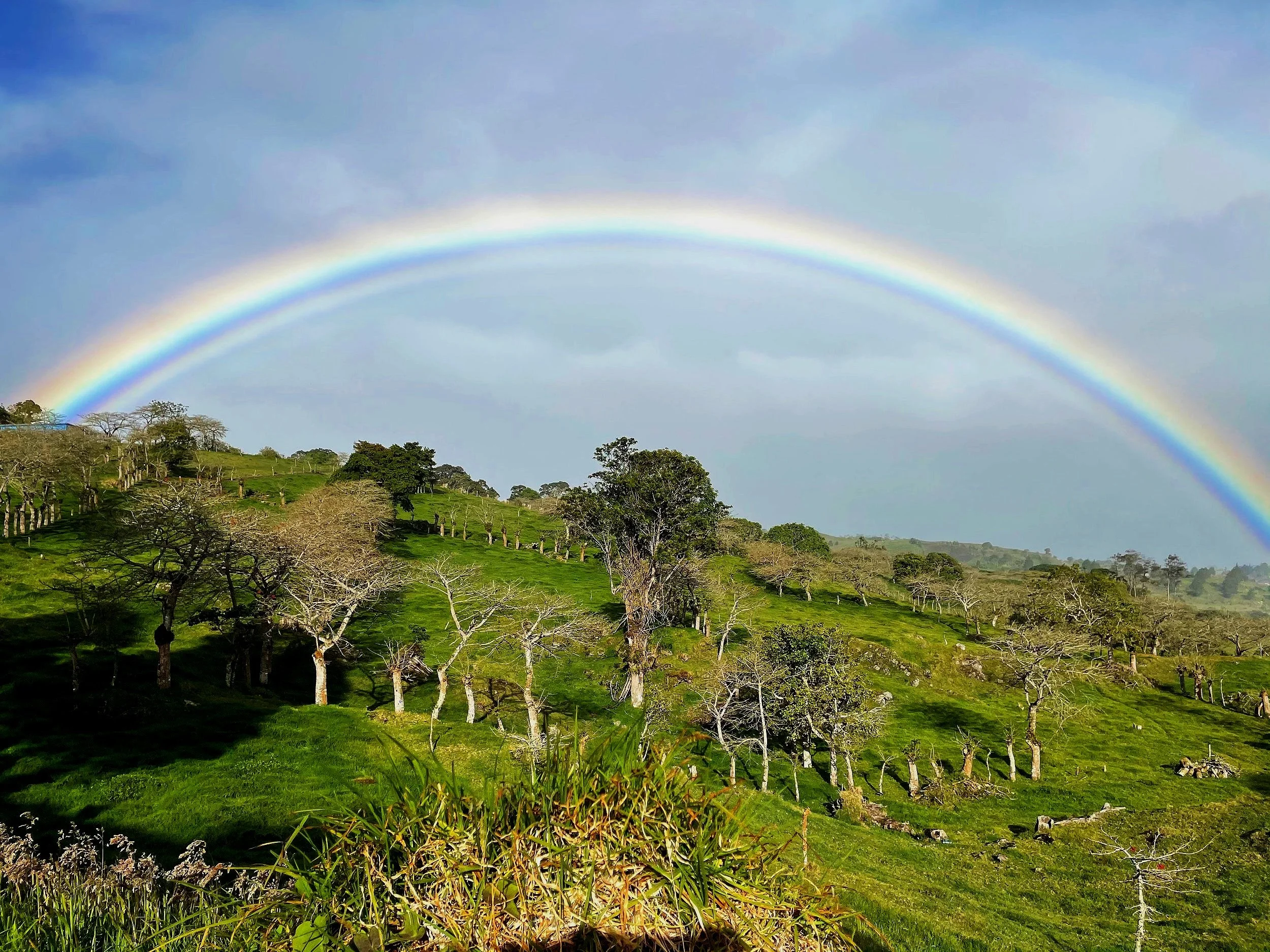
The Highlands
Highlands Destinations & Activities
The Costa Rican Highlands are a world apart from the country’s sun-soaked beaches. Spanning the Talamanca and Central mountain ranges, these elevated landscapes are defined by rolling coffee plantations, mist-laced cloud forests, volcanic summits, and hidden valleys teeming with life. With elevations ranging from 1,500 to 3,820 meters (4,900 to 12,533 feet), the highlands offer refreshing mountain air, dramatic panoramas, and some of the country’s most unique ecosystems.
The high-altitude climate sets the region apart—mornings often start with crisp, golden sunrises, while afternoons bring cool mists that weave through the canopy. At night, the temperature dips, making for cozy evenings, whether you’re nestled in a wooden lodge in San Gerardo de Dota or warming up with a fresh cup of high-altitude Tarrazú coffee.
Beyond the scenery, the highlands are an adventurer’s playground and a cultural treasure trove. Whether you’re scaling Costa Rica’s tallest peak, Chirripó, wandering through the lush slopes of Irazú Volcano, or uncovering pre-Columbian history in Cartago, the region delivers an experience unlike any other.
1. Monteverde: A Walk in the Clouds
What Makes It Special: One of the most famous cloud forests in the world, Monteverde is a botanical wonderland packed with twisting ficus trees, moss-covered bridges, and a symphony of exotic bird calls.
Top Monteverde Experiences:
Gliding through the treetops on hanging bridges
Spotting the elusive resplendent quetzal in Monteverde Cloud Forest Reserve
Exploring hidden orchid gardens and butterfly sanctuaries
Sampling hand-crafted chocolate and small-batch coffee on a farm tour
2. San Gerardo de Dota: A Birder’s Dream
What Makes It Special: A tranquil valley tucked in the Talamanca Mountains, this is one of the best places on Earth to see the resplendent quetzal, as well as a haven for nature lovers looking to escape the crowds.
Top Dota Experiences:
Guided birding excursions in Los Quetzales National Park
Trout fishing along the pristine Savegre River
Hiking through ancient oak forests cloaked in mist
Savoring home-cooked meals and freshly brewed coffee at small eco-lodges
3. Poás & Irazú Volcanoes: Fire and Fog
What Makes Them Special: These two towering volcanoes offer otherworldly craters, sweeping views, and stark lunar-like landscapes.
Standing on the rim of Poás Volcano’s massive crater, which bubbles with a surreal, turquoise lake
Exploring the eerie, windswept plains of Irazú, where on clear days, you can see both the Pacific and Caribbean coasts
Visiting Cartago’s historic Basílica de Nuestra Señora de los Ángeles, a pilgrimage site with deep cultural significance
Touring family-run coffee farms and sampling some of the country’s best beans
4. Chirripó National Park: A Trek Above the Clouds
What Makes It Special: Home to Costa Rica’s highest peak (3,820m / 12,533 ft), Chirripó offers jaw-dropping alpine views, remote páramo ecosystems, and the ultimate highland trekking challenge.
Top Chirripó Experiences:
Climbing to the summit for an unforgettable sunrise, with views stretching from coast to coast
Camping overnight at Crestones Base Lodge, a rustic but rewarding stop on the multi-day trek
Exploring glacial valleys and crystal-clear lagoons left behind by ancient ice flows
Encountering highland wildlife, including tapirs, pumas, and rare hummingbirds
Cultural Highlights of the Highlands
Beyond its wild landscapes, the Costa Rican Highlands offer a rich cultural tapestry, shaped by Indigenous traditions, colonial history, and deep-rooted agricultural heritage.
Coffee Culture: This is Costa Rica’s coffee heartland, producing world-renowned beans in Tarrazú, Naranjo, and Dota. Visiting a coffee farm isn’t just about tasting—it’s a lesson in centuries-old farming techniques and sustainable agriculture.
Traditional Cuisine: Highland towns are famous for fresh trout, homemade cheeses, and hearty stews. Don’t miss agua dulce (a warm sugarcane drink) or a comforting cup of mountain-grown hot chocolate.
Festivals & Traditions: Many highland towns, such as Zarcero and San Ramón, host horse parades (topes), folk music festivals, and vibrant religious celebrations throughout the year.
Indigenous Heritage: The Cabécar and Bribri peoples have a deep connection to the highlands, preserving traditional knowledge, crafts, and language in remote mountain villages.
Pro Tips for Visiting the Costa Rican Highlands
Pack for unpredictable weather – Mornings can be sunny, but the afternoon mist rolls in quickly, bringing a sudden chill.
Start early for the best views – Poás and Irazú often get shrouded in clouds by midday.
Acclimate to the altitude – Higher elevations mean thinner air, so take it slow on strenuous hikes.
Stay in locally run lodges – Small eco-lodges and mountain cabins offer authentic, intimate experiences.
Bring binoculars – Even if you’re not a dedicated birder, the wildlife here is worth a closer look!




